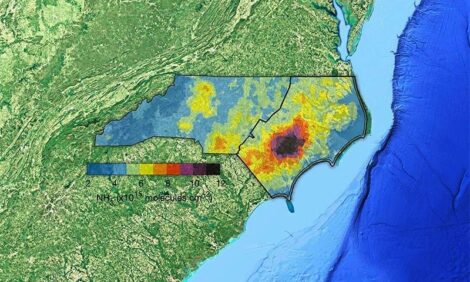



Practical Nursery Management
By Dr Todd See, Swine Genetics Specialist, North Carolina State University - Newly weaned pigs arriving at the nursery are the highest-health-risk animals in the swine production system, making their initial management and care vitally important.
 Dr Todd See
Dr Todd SeeSwine Genetics Specialist North Carolina State University |
Frequent observation is essential, and close scrutiny (at least twice a day) will promote early observation, identification, and treatment of management problems and diseases before they have serious influences on performance. This article will summarize (PIH-11) steps that should be taken to ensure rapid, efficient growth with minimal health challenges.
Before Arrival
Managing nursery pigs begins before their arrival. The room and all equipment must be properly washed and disinfected. Ventilation controls should be checked for functionality and properly set, allowing time for the rooms to become warm and dry before the piglets arrive. Feeders and supplemental heat (if used) must be in place and functioning, and waterers should be checked and adjusted to the proper height. Nursery pigs should have one watering space for each 10 to 15 pigs; if using nipple drinkers, the delivery capacity should be 2 or more cups of water per minute.
Feed should be placed in feeders just before piglet arrival, and feeder adjustment should be checked so that approximately 25 to 50 percent of the feeding pan is visible. After the pigs become more accustomed to the location of the feed and their feeding behavior adjusts, the amount of feed in the pan should be rapidly decreased to approximately 25 percent coverage.
Upon Arrival
Piglets weaned between 14 and 21 days of age generally range in weight from 8 to 13 pounds. At arrival, pigs should be sorted according to size and body condition. Grouping by weight allows you to more closely match the pigs’ weight to the diet provided. This is important because of the expense of these initial diets and the range in the digestive capability of the pigs.
First 36 Hours After Placement During the first 36 hours after weaning, pigs need to find the water and feed. During this period, double-check the water height adjustment to ensure proper access. Waterer height should be adjusted to approximately shoulder height of the smallest pigs in the pen. Assure that feed is always available in the feeder, and if comfort mats are used, place small amounts of feed on the mats to encourage feeding behavior. Pigs should NOT be limit-fed after arrival. Feed can be provided several times per day, but fresh feed should always be available. Blocking or tying nipple waterers open for the first 24 hours will help the newly weaned pigs find the waterer more quickly. Pigs should be observed to ensure they have found the water and are beginning to develop feeding behavior.
36 to 60 Hours After Placement
Most pigs will have found the water and will have begun to find the feeders and eat by 36 hours after placement. However, this is a critical period for identifying pigs that may require extra attention. Two to 4 percent of pigs will be candidates for individual attention, and identifying them is always the most difficult part of the process.
To identify at-risk pigs while taking a walk-through of the nursery, look for:
- Mental status - alert versus excited/depressed
- Body condition - fat or normal versus thin
- Abdominal shape - bloated or gaunt
- Skin - sleek versus fuzzy
- Appetite - feeding at the feeder versus huddled
- Evidence of urination and/or defecation
- Signs of dehydration - sunken eyes
Abdominal shape is an especially useful indicator. Pigs that are eating well will begin to have round abdomens, whereas pigs that have not begun to eat will be gaunt. The abdomen can be palpated for evidence of food intake. Suspected dehydration can be evaluated further by palpating mucous membranes of the mouth or the tip of the nose. One other test of dehydration is to pinch a fold of skin just behind the front limb. If the fold remains elevated for more than a few seconds, it is a sign of dehydration.
Once at-risk pigs have been identified, wet a small handful of pellets with water and gently place the softened pellets in each pig’s mouth. If a large number of pigs require attention, moisten a small bucket of pellets and gently feed individual pigs. A gruel mixture and a 12-cc syringe with the end cut off can be used as a dosing tool. The moist pellets or gruel sticks to the pig’s tongue, causing a swallowing reflex. The pig should be carefully placed near the feeder so it associates the food in its mouth with the feed in the feeder.
Small pigs with low body-fat reserves must have a ready source of energy. As little as 20 to 30 grams of feed will provide energy to keep small pigs from starving. In high-health-status pigs, signs of anorexia, depression, and dullness are more likely to be caused by lack of energy than infectious disease.
Remainder of Nursery Period
Routine observation during the whole nursery period remains vital for the early observation, identification, and treatment of disease. Feed and water consumption should be monitored because a reduction in either is a sign of a problem. Be prepared to act immediately in the event of illness, and train pig handlers to recognize the signs of major diseases and offer the most appropriate treatment. Necropsies performed on dead pigs to accurately determine the cause of death and the most effective treatment(s) are beneficial.
Printable version
Click Here for a Printable PDF version of this articleSource: North Carolina State University Swine Extension - February 2003







